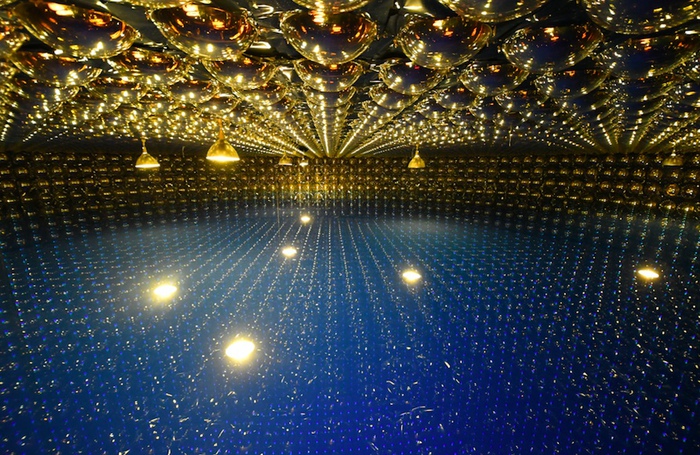The first clues begin to shed some light on one of the puzzles of contemporary physics, that is why the matter had the better of antimatter if after the Big Bang they were present in the same quantity and if they canceled each other.
The signal of what could have happened comes from the most elusive particles of the universe, neutrinos, and their antimatter counterpart, antineutrinos, thanks to the research that has earned the cover of the journal Nature, conducted by the international collaboration T2K (Tokai to Kamioka). The latter involves 12 countries including Italy, whose participation is coordinated by the National Institute of Nuclear Physics (INFN) and includes the universities of Naples, Padua, Rome Sapienza and Polytechnic of Bari.
The T2K experiment has shown that antineutrinos transform less frequently than neutrinos, i.e. they assume less frequently the typical characteristics of one of the families of these particles that exist in nature, i.e. the electronic neutrinos (and antineutrinos), mu and tau.
This ability to transform is the phenomenon called oscillation, foreseen by the Italian physicist Bruno Pontecorvo in the 1950s and demonstrated only recently. "The new results demonstrate, with a certainty of 99.7%, that the oscillation phenomenon occurs with different probabilities for neutrinos compared to antineutrinos", de tto ANSA, Gabriella Catanesi, responsible for T2K's Infn and member of the executive committee of the experiment.
Neutrinos are very elusive particles: just think that in a second 60 billion pass through the tip of a finger without leaving a trace. We therefore need very large experiments and very powerful sources to study them.
In the T2K experiment, a beam of neutrinos, or antineutrinos, produced by the particle accelerator, Japan Proton Accelerator in the Japanese village of Tokai, is sent at 295 kilometers to the Super-Kamiokande underground detector, which with its 11,000 electronic eyes is capable of capture the light produced by elusive neutrinos in interactions with 50,000 tons of pure water.
"During the journey the antineutrinos are transformed from one type to another, swinging from muons to electronics", clarifies Catanesi. "The goal of T2K is to look for differences in the behavior between neutrinos and antineutrinos, to understand - he adds - if the symmetry between these two components is violated, contrary to what happens for most of the laws that describe the behavior of elementary particles".
One of the mysteries of physics is, in fact, to understand why the original symmetry between matter and antimatter has disappeared in the aftermath of the Big Bang, where antimatter has ended and why we do not see, for example, anti-stars, anti-galaxies and even an anti-universe.
For Catanesi, “having observed that the number of antineutrinos that transform from one type to another is lower than neutrinos may be important in explaining why today we see more matter than antimatter in the universe. It is a starting point. Indeed, more precise measurements will be needed to confirm these indications. For this - he concluded - we are working to further improve our apparatus, which will help us to give an answer to the problem of the missing antimatter of the universe ".

